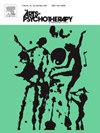Forty years of sandplay therapy research: A systematic review with insights into emerging digital applications
IF 1.5
3区 心理学
Q3 PSYCHOLOGY, CLINICAL
引用次数: 0
Abstract
This study systematically reviewed the development of sandplay therapy (SPT) from 1985 to 2025 in terms of theoretical foundations, practical applications, and research methods, as well as recent progress and future directions in cultural adaptation and digital integration. Seventy-one eligible studies were reviewed, covering qualitative, quantitative, and mixed-methods research. The results showed that symbolic and imaginal expression, core mechanisms of SPT, are strongly influenced by the cultural context. This promotes the development of local symbolic systems and enhances SPT’s cross-cultural adaptability. Practically, SPT has been widely applied with children, adolescents, and adults, showing notable positive effects on trauma recovery, emotional regulation, and social adaptation. Methodologically, research has increasingly used scales, neuroimaging, and physiological indicators to strengthen understanding of relevant therapeutic mechanisms. Artificial intelligence and augmented reality technologies have been explored in SPT assessment and intervention, showing potential to improve standardisation and remote accessibility. Future studies could focus on theoretical construction, ethical evaluation, and clinical validation of intelligent sandplay systems to support innovative development. This review offers a comprehensive overview of four decades of SPT and provides theoretical and practical insights that will enhance its cultural and digital integration.
四十年的沙盘游戏疗法研究:对新兴数字应用的系统回顾
本研究从理论基础、实践应用、研究方法、文化适应与数字融合的最新进展和未来方向等方面系统回顾了1985 - 2025年沙盘游戏疗法(sandplay therapy, SPT)的发展。综述了71项符合条件的研究,包括定性、定量和混合方法研究。结果表明,语言交际的核心机制——符号表达和想象表达受到文化语境的强烈影响。这促进了地方符号系统的发展,增强了SPT的跨文化适应性。在实践中,SPT在儿童、青少年和成人中得到了广泛的应用,在创伤恢复、情绪调节和社会适应方面表现出显著的积极作用。在方法上,研究越来越多地使用量表、神经影像学和生理指标来加强对相关治疗机制的理解。人工智能和增强现实技术已经在SPT评估和干预中进行了探索,显示出提高标准化和远程可及性的潜力。未来的研究可以从理论构建、伦理评价和临床验证等方面入手,为智能沙玩系统的创新发展提供支持。这篇综述提供了四十年来SPT的全面概述,并提供了理论和实践见解,将加强其文化和数字整合。
本文章由计算机程序翻译,如有差异,请以英文原文为准。
求助全文
约1分钟内获得全文
求助全文
来源期刊

Arts in Psychotherapy
Multiple-
CiteScore
3.20
自引率
11.10%
发文量
66
期刊介绍:
The Arts in Psychotherapy is a dynamic, contemporary journal publishing evidence-based research, expert opinion, theoretical positions, and case material on a wide range of topics intersecting the fields of mental health and creative arts therapies. It is an international peer-reviewed journal publishing 5 issues annually. Papers are welcomed from researchers and practitioners in the fields of art, dance/movement, drama, music, and poetry psychotherapy, as well as expressive and creative arts therapy, neuroscience, psychiatry, education, allied health, and psychology that aim to engage high level theoretical concepts with the rigor of professional practice. The journal welcomes contributions that present new and emergent knowledge about the role of the arts in healthcare, and engage a critical discourse relevant to an international readership that can inform the development of new services and the refinement of existing policies and practices. There is no restriction on research methods and review papers are welcome. From time to time the journal publishes special issues on topics warranting a distinctive focus relevant to the stated goals and scope of the publication.
 求助内容:
求助内容: 应助结果提醒方式:
应助结果提醒方式:


